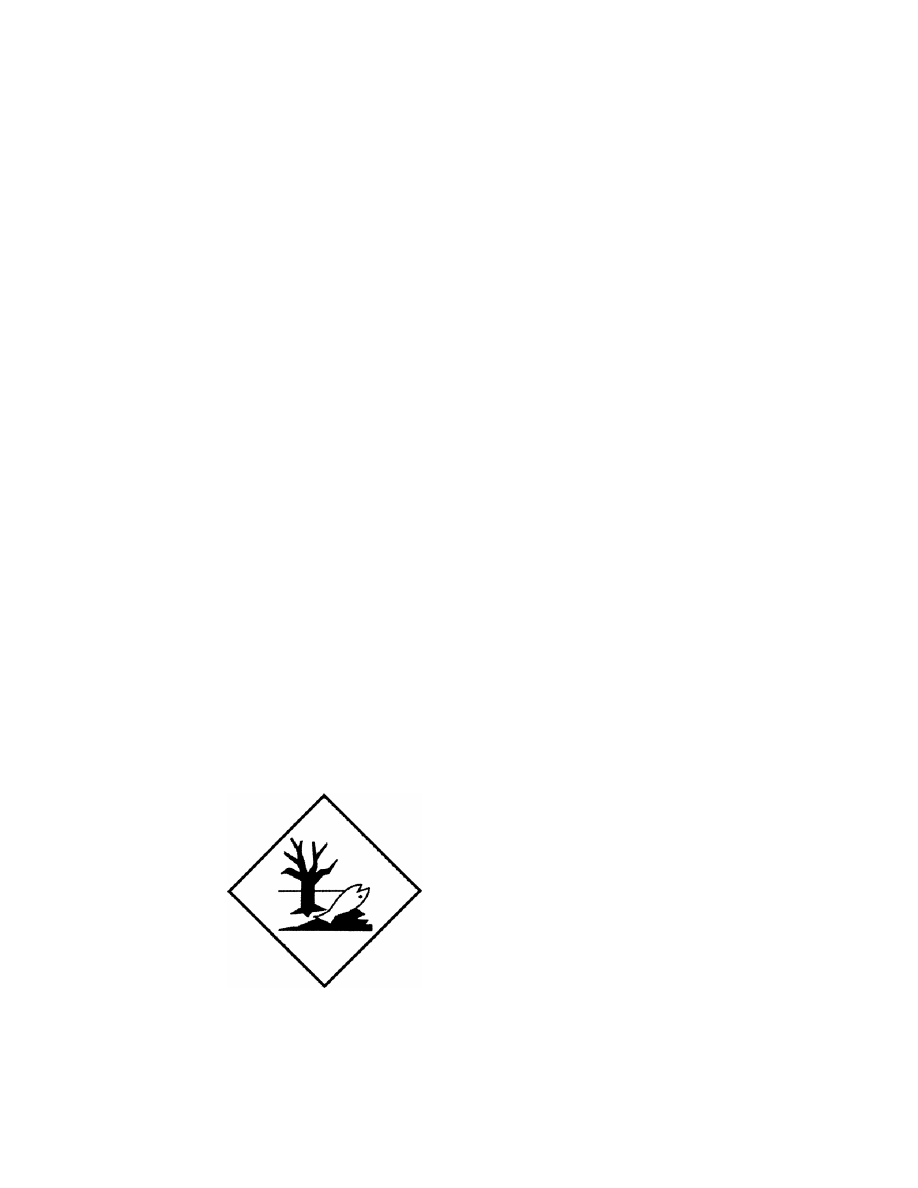
405
Pipeline and Haz. Matls. Safety Admin., DOT
§ 172.322
the FC number assigned by a DOT-ap-
proved Fireworks Certification Agen-
cy.
(c) When more than five different
Class 1 materials are packed in the
same package, the package may be
marked with only five of the EX-num-
bers, national stock numbers, product
codes, or combination thereof.
(d) The requirements of this section
do not apply if the EX number, FC
number, product code or national stock
number of each explosive item de-
scribed under a proper shipping de-
scription is shown in association with
the shipping description required by
§ 172.202(a). Product codes and national
stock numbers must be traceable to
the specific EX number assigned by the
Associate Administrator or FC number
assigned by a DOT-approved Fireworks
Certification Agency.
(e) The requirements of this section
do not apply to the following Class 1
materials:
(1) Those being shipped to a testing
agency in accordance with § 173.56(d) of
this subchapter;
(2) Those being shipped in accordance
with § 173.56(e) of this subchapter, for
the purposes of developmental testing;
(3) Those which meet the require-
ments of § 173.56(h) of this subchapter
and therefore are not subject to the ap-
proval process of § 173.56 of this sub-
chapter;
(4) [Reserved];
(5) Those that are transported in ac-
cordance with § 173.56(c)(2) of this sub-
chapter and, therefore, are covered by
a national security classification cur-
rently in effect.
[Amdt. 172–123, 56 FR 66254, Dec. 20, 1991, as
amended by Amdt. 172–139, 59 FR 67487, Dec.
29, 1994; 66 FR 45379, Aug. 28, 2001; 74 FR 53188,
Oct. 16, 2009; 78 FR 42477, July 16, 2013]
§ 172.322
Marine pollutants.
(a) For vessel transportation of each
non-bulk packaging that contains a
marine pollutant—
(1) For a proper shipping name used
to describe a hazardous material that
is a marine pollutant and assigned the
letter ‘‘G’’ in column (1) of the § 172.101
hazardous materials table or that con-
tains the text ‘‘n.o.s.,’’ the name of the
component which makes the material a
marine pollutant must be marked on
the package in parentheses in associa-
tion with the marked proper shipping
name unless the proper shipping name
identifies by name the component
which makes the material a marine
pollutant. Where two or more compo-
nents that make a material a marine
pollutant are present, the names of at
least two of the components most pre-
dominantly contributing to the marine
pollutant designation must appear in
parentheses in association with the
marked proper shipping name. For ma-
terials described using ‘‘UN3077, Envi-
ronmentally hazardous substance,
solid, n.o.s.’’ and ‘‘UN3082, Environ-
mentally hazardous substance, liquid,
n.o.s.,’’
see
§ 172.102(c)(1), special provi-
sion 441 for additional provisions; and
(2) Except as otherwise provided in
this subchapter, the MARINE POL-
LUTANT mark shall be placed in asso-
ciation with the hazard warning labels
required by subpart E of this part or, in
the absence of any labels, in associa-
tion with the marked proper shipping
name.
(b) Except as otherwise provided in
this subchapter, a bulk packaging that
contains a marine pollutant must—
(1) Be marked with the MARINE
POLLUTANT mark on at least two op-
posing sides or two ends other than the
bottom if the packaging has a capacity
of less than 3,785 L (1,000 gallons). The
mark must be visible from the direc-
tion it faces. The mark may be dis-
played in black lettering on a square-
on-point configuration having the same
outside dimensions as a placard; or
(2) Be marked on each end and each
side with the MARINE POLLUTANT
mark if the packaging has a capacity
of 3,785 L (1,000 gallons) or more. The
mark must be visible from the direc-
tion it faces. The mark may be dis-
played in black lettering on a square-
on-point configuration having the same
outside dimensions as a placard.
(c) A transport vehicle or freight con-
tainer that contains a package subject
to the marking requirements of para-
graph (a) or (b) of this section must be
marked with the MARINE POLLUT-
ANT mark. The mark must appear on
each side and each end of the transport
vehicle or freight container, and must
be visible from the direction it faces.
This requirement may be met by the
